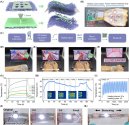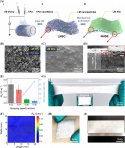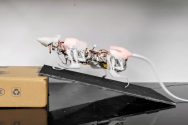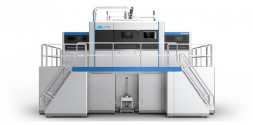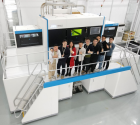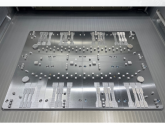Chinese researchers made artificial sunflowers that can follow source of light in 3D space. Check out the embedded videos:
News report in Chinese:
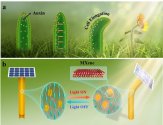
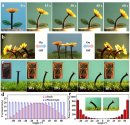
Paper published in English (paywalled):
News report in Chinese:
近日,天津大学封伟教授和王玲教授团队与东南大学李全院士团队合作,成功开发了一种基于MXene增强液晶弹性体的仿生向日葵管状液晶驱动器,实现其在三维空间内智能感知、信息自反馈和精准光源追踪,并探索了其在自适应光伏系统中的潜在应用(如图1所示)。


Paper published in English (paywalled):
Bioinspired Phototropic MXene-Reinforced Soft Tubular Actuators for Omnidirectional Light-Tracking and Adaptive Photovoltaics
Endowing artificial advanced materials and systems with biomimetic self-regulatory intelligence is of paramount significance for the development of somatosensory soft robotics and adaptive optoelectronics. Herein, a bioinspired phototropic MXene-reinforced soft tubular actuator is reported that exhibits omnidirectional self-orienting ability and is capable of quickly sensing, continuously tracking, and adaptively interacting with incident light in all zenithal and azimuthal angles of 3D space. The novelty of the soft tubular actuator lies in three aspects: 1) the new polymerizable MXene nanomonomer shows high compatibility with liquid crystal elastomer (LCE) matrices and can be in situ photopolymerized into the polymer networks, thus enhancing the mechanical and photoactuation properties; 2) the distinct hollow and radially symmetrical structure facilitates the actuator with fast photoresponsiveness and phototropic performance through retarding the heat conduction along the radial direction; 3) the MXene-LCE soft tubular actuator simultaneously integrates sensing, actuation, and built-in feedback loop, thus leading to a high light-tracking accuracy and adaptive phototropism like a hollow stem of plants in nature. As a proof-of-concept demonstration, an adaptive photovoltaic system with solar energy harvesting maximization is illustrated. This work can provide insights into the development of artificial intelligent materials toward adaptive optoelectronics, intelligent soft robotics, and beyond.

